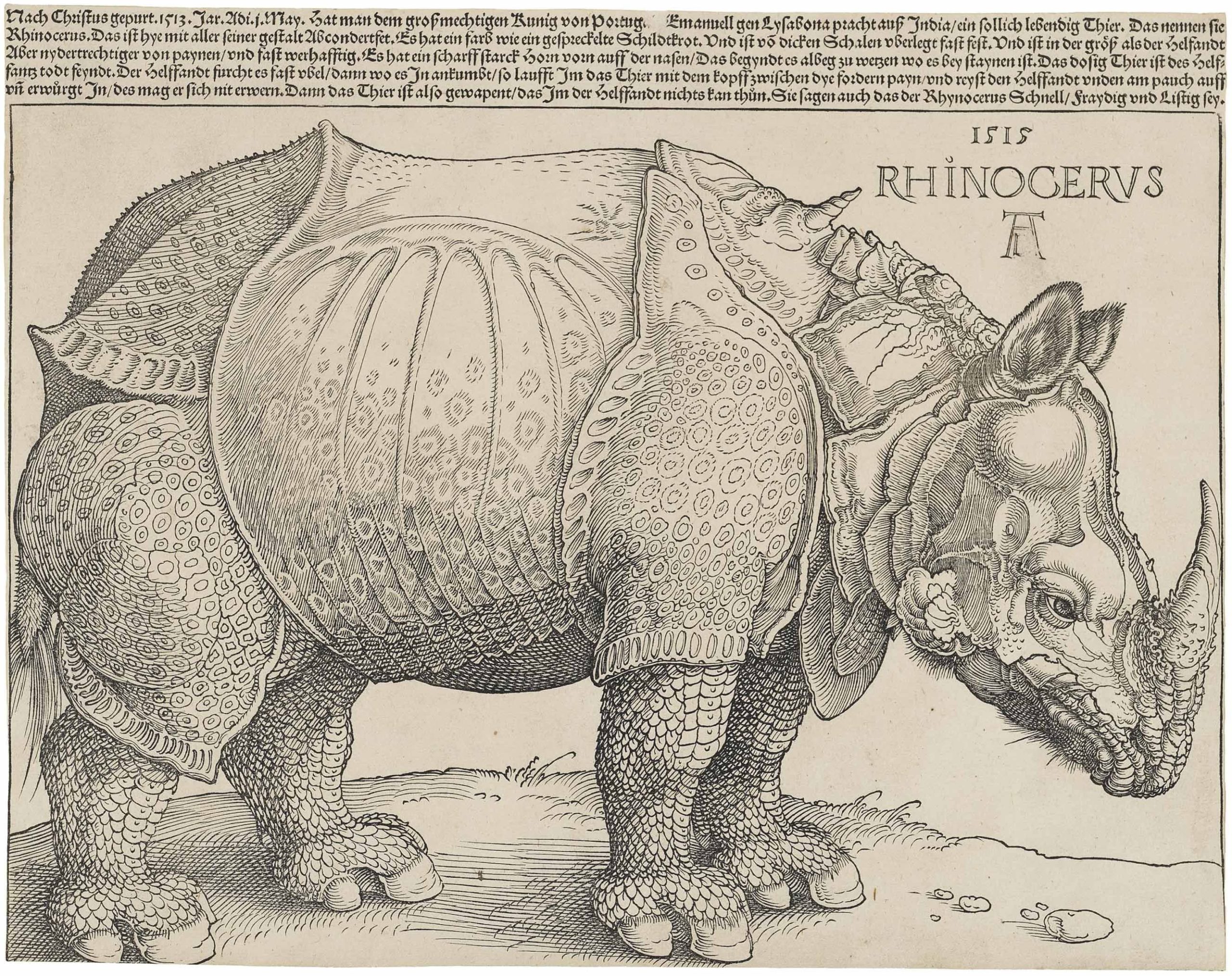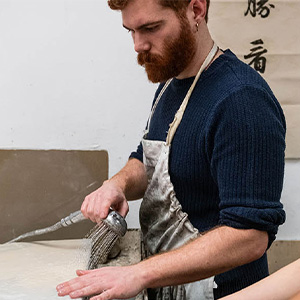What it is
Printmaking is an ancient practice, a space where marks meet matter—where ink glides across paper like a thought taking shape. The two-dimensional image emerges from the manipulation of materials such as zinc, copper, wood, and others, shaped with the intent of producing reproducible images. It’s a process of precision and progressive refinement in which gesture becomes central.
At RUFA, we practice the art of time and patience, of the unexpected turning into beauty, of plates that tell different stories every time. Printmaking is both an ancient and modern language—made of etchings, scratches, and reliefs. It’s the fine line between craftsmanship and poetry, between process and vision. It works through the hands but is explored through the inner eye.
A Graphic Bestiary of Lines and Drawings
The Printmaking course introduces students to the fascinating world of alternative graphic techniques—expressive practices that are less conventional than drawing and painting, yet equally rich and evocative. Through in-depth exploration of techniques such as woodcut, monotype, drypoint, and collagraphy, students will experiment with traditional processes through new visual languages, enhancing their creativity and broadening their expressive possibilities.
Course type: group – in person
Participants: Max 15
Schedule: weekly, Saturdays from 9 AM to 1 PM
Duration: 10 lessons – total 40 hours
Cost: €590.00 in a single payment or in two instalments of €300.00
Materials: to be purchased by the student
Requirements/supports: none
Language: Italian
Instructor: Davide Miceli
Location: RUFA – Via Degli Ausoni, 7 – Rome, Printmaking Room, A01
Registrations open: October 5, 2025
Registration deadline: January 23, 2026
The course focuses on practical and hands-on activities. The techniques offered are selected for their accessibility and ease of use, allowing students to continue their creative exploration independently, even outside the academic environment. Although no complex equipment is required, RUFA’s workshops will be available for the entire duration of the course, especially the Fine Art Printmaking Room at the former Pastificio Cerere.
The natural world – particularly the animal realm – will be used as inspiration for graphic projects, due to its wealth of forms and colours, which are easily reinterpreted in a personal key. From the third lesson onward, students may develop an individual project based on their artistic inclinations, subject to the instructor’s approval.
Lesson 1 – Introduction to Art Printmaking
Guided tour of the workshop with an introduction to printmaking tools and machinery, along with a brief history of the medium.
Lesson 1 – Introduction to Trace Monotype
The first exercise involves using an inked acetate sheet rolled with a rubber roller, overlaid with a sheet of tissue paper. Students draw on the back of the paper using various tools, revealing the printed image at the end of the process.
This activity explores indirect mark-making and the element of surprise typical of monotype printing.
As homework, each student creates a drawing inspired by a marine species, focusing on its silhouette. This drawing will be used for the second exercise.
Lesson 2 – Monotype with Etching Press
Students are introduced to a monotype technique using selective ink removal from the matrix with rags, brushes and other tools.
Demonstration follows: setting the register, cutting paper, and using the press.
Second exercise: starting from the sketches created in the previous lesson, students produce a cut-out silhouette on acetate, ink it with various colours, and print it on a single support. The exercise may be repeated to explore formal and chromatic variations, depending on time.
For the next lesson, students are asked to bring two recycled tetrapak containers and to prepare new sketches inspired by the insect world.
Lesson 3 – Collagraph Printing
The lesson opens with a practical demonstration of collagraphy, a technique offering a wide range of textures and effects through varied materials and tools.
Third exercise: students work on their tetrapak plate, reinterpreting their insect-themed sketches. The inking and printing on the press are done with individual guidance.
For the following session, students should prepare a new sketch inspired by an animal or plant of their choice.
Lesson 4 – Introduction to Woodcut
The session begins with a group review of the sketches and an introductory presentation on woodcut, including historical and visual references.
A practical demo follows on how to use gouges to create the matrix.
Fourth exercise: students carve their wooden block based on their sketches and print manually on tissue paper using a wooden spoon.
Lessons 5 and 6 – Drypoint
Introduction to the drypoint technique with historical references and analysis of original plates. Students prepare their own plexiglass plate by filing and refining it with scraper and burnisher.
Fifth and sixth exercises: students create paired portraits using plexiglass transparency. Taking turns as artist and model, they complete the drawing on the plate, proceed with engraving, and finally print on the press under supervision.
Lessons 7, 8, 9, 10 – Final Project
The last four lessons are dedicated to the final project, chosen from the following options:
• Collective Printed Bestiary
Creation of a collective artist’s book using woodcut on tissue paper, bound manually with Japanese technique. The cover is printed on heavier paper using one or more intaglio techniques. At the end of the course, each participant receives a copy.
• Large Collective Prints
Production of large-scale compositions inspired by the second lesson exercise but with increased compositional complexity. This project allows the introduction of the carborundum technique and the combination of several techniques in a single piece.
• Guided Individual Project
Development of a personal project based on the techniques learned during the course. The project is outlined in an initial meeting with the instructor and guided through key phases with ongoing feedback and tutoring.
MATERIALS:
Materials provided by RUFA
Wood or linoleum blocks for woodcut
Tissue paper
Work gloves and disposable gloves
A4 acetate sheets
1 mm plexiglass plates
Recommended materials for personal use (to be purchased by the student – remain their property)
Woodcut gouges
Engraving tools
Printing paper sheets (at least 5 per student; Fabriano Unica 50×70 cm white paper is available at RUFA for €1.00 per sheet)
Materials to bring from home
Sketchbook or drawing paper (printer paper is also fine)
Pens, pencils, and permanent markers of the student’s choice
Recycled tetrapak
Wooden kitchen spoon
JANUARY
24/01/2026
31/01/2026
FEBRUARY
07/02/2026
14/02/2026
21/02/2026
28/02/2026
MARCH
07/03/2026
14/03/2026
21/03/2026
28/03/2026
Make-up dates*
11/04/2026
18/04/2026
*”Make-up sessions” refer to additional dates offered by RUFA in the event of cancellations due to the instructor, the Academy, or force majeure. Make-ups are not provided for student absences.
A Roman artist active in sculpture and art printmaking, Miceli trained at RUFA, where he earned a degree in Sculpture (2023) and in Art Printmaking (2024). His artistic research moves fluidly across disciplines, with a path including solo and group exhibitions, artist residencies, and participation in prestigious competitions. He has collaborated as a technical specialist with internationally renowned artists, including Giuseppe Gallo and Adam McEwen.
Alongside his artistic production, he works in academia at RUFA, where he supports Davide Dormino in the Sculpture programme and Maria Pina and Gianna Bentivenga in Art Printmaking.
In 2024, he led the *Roman Post-Cards* workshop on synthetic lithography for a class from the American Academy in Rome. With RUFA’s Short Courses, he officially begins his teaching career.
He works steadily with the Lorcan O’Neill Gallery, curating exhibitions and installations by internationally acclaimed artists.
RUFA students and alumni: 50% discount
Former Short Courses and RUFA Summer 2024–25 students: 10% discount
University students: 5% discount (upon presenting a valid student ID)
Course bundle/group/family packages: contact corsibrevi@unirufa.it for personalised solutions
All enrolled students, regardless of eligibility requirements, can benefit from early enrolment discounts:
Very Early Bird: entro il 31 ottobre 2025 → €501,50 (–15%)
Early Bird: dal 1 novembre al 23 dicembre 2025 → €531,00 (–10%)
All students with certification under Law 104/92 are entitled to a 20% discount on the registration fee, regardless of the chosen time slot. To apply, documentation must be submitted to the Registrar’s Office at corsibrevi@unirufa.it.
Enrolment in a short course entitles students, during the course month, to benefit from discounts at partner shops and eateries.
These discounts apply to both creative materials and lunch breaks near the campuses.
Each year, the Short Courses Office will provide a list of partner businesses.
For information about the course please fill in the form and we will contact you.






